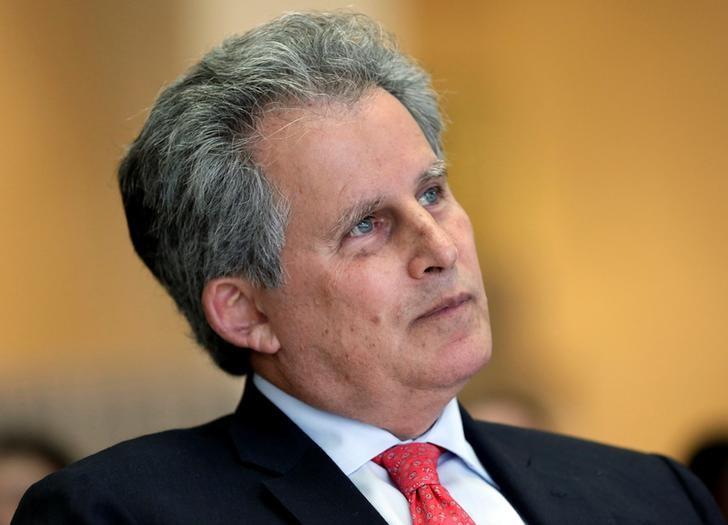CAIRO - May 2019: Though the float has been wreaking havoc on prices across the board— and especially those of imported goods—the steep exchange rate hike could serve as a push for local manufacturers. A high dollar-to-pound exchange rate would also pave the way to boost exports as it translates into competitive prices on the international market. Those factors, if coupled with economic reforms, would all lead to significant economic growth.
A stronger industrial sector that fulfills market needs would decrease our dependence on imports without enforcing import barriers, as well as decreasing deficits in the balance of payments (BOP).
Economic expert Hany Tawfik argues that since currency value is determined by its purchasing power, a currency’s performance would improve as production increases and pushes prices down.
“If our savings are much less than what is needed for investments, if our consumption is higher than our production, and if our imports are much higher than our exports, our currency value would be low and the annual inflation rate would increase,” Tawfik says. “To avoid such situations, we need increases in investments, production and exports. China’s savings rate is 45% of income per annum, that is why it has a lot of investments.”
But it is also important to remember that currency value does not necessarily represent the economic performance of countries, nor does it reflect true supply-demand dynamics locally and internationally. The currencies of Japan, a developed, high-income country, and middle-income superpowers such as China, Russia, India and Brazil are each equivalent to below $1 in worth. Politics also play a major role in determining a currency’s value. For instance, the value of the US dollar is linked to both its economic performance as well as to oil prices, due to petrodollars, or revenues received from the sale of oil.

FILE - Economic Expert Hany Tawfik
Well into the second year since the float, Tawfik argues that the decision was essential to remain competitive in the global market and reflect the currency’s true market price. “Egypt has not fully floated the currency; the Central Bank of Egypt can still play a role in determining the exchange rate,” Tawfik stresses, explaining that the reserves grew due to “hot money” as foreigners would convert their dollars into Egyptian pounds to benefit from high interest rates, only to later convert their money back into dollars at a possibly lower rate. “That is why fixing the exchange rate is very dangerous,” he adds.
“Keeping our exchange rate low on purpose made importing cheaper than manufacturing locally,” Tawfik argues. He adds that someone in the textile business, for instance, would import products from China rather than manufacture them because they were cheaper, given the old lower-than-value exchange rate. After the flotation, however, the situation was reversed, as manufacturing became a more cost-effective option for many. Some, for instance, have opted to recycle plastic in toy-making instead of importing the raw material.
The next step toward growth
“Egypt has stabilized and normalized the economy. Some countries never make it to sustainable growth from stabilization,” First Deputy Managing Director of the International Monetary Fund David Lipton said at a lecture at the American University in Cairo in May 2018. He added that for Egypt’s economy to grow, the next step would be to “formalize in the informal sector and open for trade.” Lipton also argued that it is important for Egypt’s private sector to grow and create jobs at a scale that matches population growth. To achieve that, Lipton suggested creating opportunities for business formulation and growth, and increasing competition. Businesses should cater to the local market as well as global competition to continuously improve. He stipulated that a business should work toward accomplishing growth, as opposed to just profit maximization.

First Deputy Managing Director of the International Monetary Fund David Lipton attends a discussion “Are we Safer? The Case for Updating Bagehot” during the IMF/World Bank annual meetings in Washington, U.S., October 8, 2016. REUTERS/Yuri Gripas
Increasing the value-added tax to cover subsidies causes a rise in prices on the short term, Lipton argued. However, it is beneficial on the long run, if coupled with lifting subsidies as VAT reduces tax evasion and can be a channel to development. “Energy subsidies make up between 8-9% of GDP,” Lipton added.
Lipton added that although the recent monetary policy aims to lower inflation rates, printing paper currency drives inflation up. Tawfik indicates that the current GDP growth is a consequence of printing money and paying construction companies to build new cities, as opposed to being driven by production. “That is a malignant growth, coupled with an increase in debts. There is growth due to the hike in loans, but no development,” he argues. Tawfik elaborated that building infrastructure is important, but lacks sustainability since in parallel, there must be a focus on building new factories and helping stumbling ones.
For foreign direct investment to grow, Tawfik argues that corruption needs to be addressed. He adds that he believes Zohr gas shouldn’t be exported, but rather used for local energy needs, especially factories.
Tawfik and Lipton also argue that it is necessary to match production to the local market’s needs before focusing on exporting. “If we export, the purchasing power would increase. [Our] margins, on the global scale, are very low and the competition [on the international arena] is heated compared to the domestic market; thus, producers would mainly target the domestic market, and then export.”
Developing corporate Egypt would lead to a trickle-down effect in terms of income, Tawfik says. By the same token, Lipton noted that Egypt should get rid of impediments facing technological development as the world is going in that direction “at a very fast pace.” He gave the example of Mexico, which underwent a boost in the telecommunications segment by 60%, and suggested that Egypt focus on the same sector as well.
On the other hand, Lipton shed light on the importance of developing social safety networks, setting policies guaranteeing equal income distribution, and securing women’s economic rights. Tawfik similarly stresses developing education, healthcare and providing monetary subsidies to those who deserve it, but adds that a family shouldn’t receive subsidies for their third child to limit population growth. The funding for such reforms and initiatives can be made available by addressing tax evasion, which has reached LE 400- 500 billion per year, Tawfik adds. He highlights that resolving this may take 10 years as it is tied to financial inclusion; it is then easier to regulate electronic payments, as opposed to cash. As Lipton noted, taxes represent only 13% of Egypt’s GDP, while the rest comes from government revenues, such as those from the Suez Canal.
Lastly, for the economy to take further steps to move from stabilization to growth, Tawfik argues that structural adjustment to Egypt’s huge administrative body are key. At the moment, Egypt has the highest ratio of one public employee for every 10 citizens; in China, for instance, the rate is one for every 300. Until all these reforms are implemented, “the middle class will continue to suffer for a while,” Tawfik concludes.
The article was published in Business Today Egypt July 2018 issue


Comments
Leave a Comment